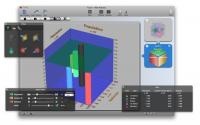According to figures published by the IDC research group (www.idc.com), the commercial tablet market will reach more than 11 million units by 2019 in Western Europe, achieving more than 130% growth. Tablets continue to represent a significant opportunity for device makers in the coming years.
Since their launch in 2010, tablets have been strong in the consumer segment and have benefited from early adopters in enterprises. The introduction of tablets contributed to an ever-growing number of computing devices increasingly differentiated in terms of screen size and product features as demand is influenced by end users’ differing mobility needs.
Among other things, innovation has brought new product designs, with devices becoming lighter and better connected, and with greater input options, including keyboards, according to IDC. With traditional PC vendors expanding their offerings to include tablets, devices are increasingly coming with the features requested by IT departments (security, for example), while Apple and Samsung have been promoting some of their features for enterprise use. Based on IDC’s latest survey of tablets in enterprises, their adoption rate is expected to double between 2014 and 2015 and to grow significantly until the end of the forecast period.
“Tablets are used in companies of all sizes,” says Chrystelle Labesque, research manager, IDC EMEA Personal Computing. “While the first perception might have been that tablets were entering enterprises mostly as employees were bringing in their own devices, the reality is that more than two-thirds of the enterprises surveyed in France, Germany, and U.K. have already deployed tablets.”
While the volume of sales remained limited in 2014, IDC expects the market to thrive in 2015, benefiting from continuous price erosion and innovation. In addition, with 2-in-1s meeting productivity needs similar to notebook and providing longer battery life, their penetration in the corporate and SMB areas is expected to increase.
The launch of Windows 10 will also facilitate the integration of the device as a notebook replacement, additional mobile device, or computing device in the new era of digital processing. Interestingly, Apple announced in 2014 a partnership with IBM to meet demand from the commercial sector, and earlier this year Google introduced Android for Work, which is expected to increase the relevance and integration of Android in the enterprise area.
“Increasing employees’ productivity is the main driver behind tablet adoption in enterprises,” says Marta Fiorentini, senior research analyst, IDC EMEA Personal Computing. “As more companies embrace digital transformation and their workforce become increasingly mobile, tablets have clearly emerged as a winning form factor to provide computing power for new users and processes in enterprises. The commercial segment is therefore expected to grow significantly in the coming quarters. This will support overall market stabilization in 2015 and will drive tablet penetration further and beyond the forecast period.”




